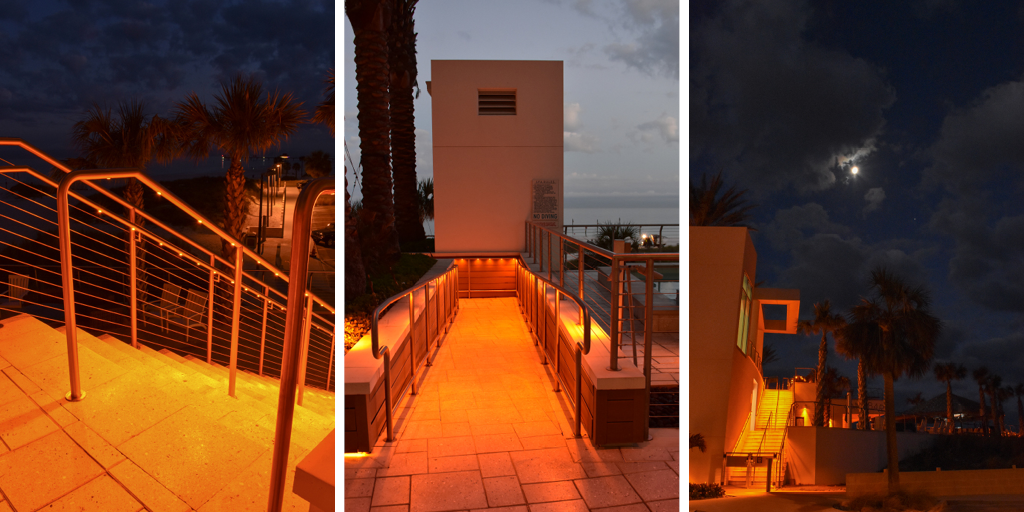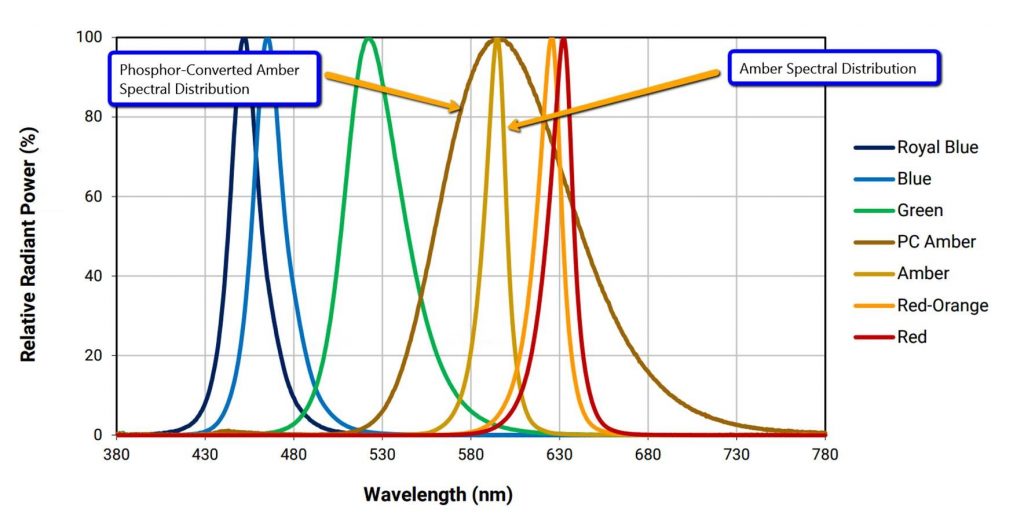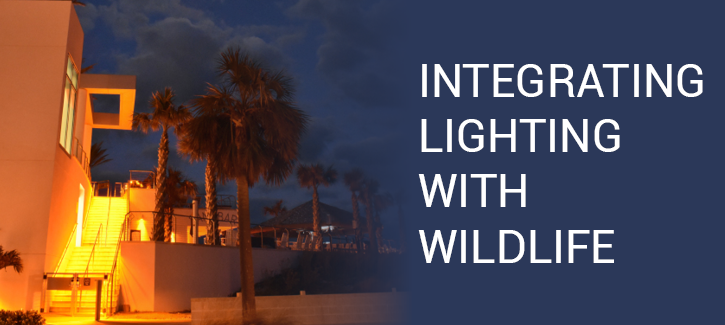The need for “Turtle-Friendly Amber” lights has been well-documented and well-deployed. Up and down coasts home to sea turtle breeding grounds, great steps have been made to ensure that the hatchlings are protected from light pollution. To be Wildlife-Certified, the LED must produce a spectral distribution between the 590-610 nanometer wavelength. If you’ve ever seen this in the field, you’ve no doubt noted its deep reddish-orange hue, and generally dim appearance.
 Turtle-Friendly Amber KLIK LEDpods™ at Opal Sands Resort in Clearwater Beach, FL, USA
Turtle-Friendly Amber KLIK LEDpods™ at Opal Sands Resort in Clearwater Beach, FL, USA
Beyond turtles, a movement is underway to more gently interface the human environment with that of the natural. The integration of amber-colored lights in other wildlife-sensitive areas is becoming a common trend throughout the country.
What to do when you are designing a space where wildlife-amber is present, but not needed across the entire site? Certainly, switching to more standard warm white light is an option, but this can create an uncomfortable contrast. Selecting amber throughout the entire job may not be desired, given its low light levels.
Enter the Phosphor-Converted Amber Chip. Rather than a true amber diode, the PC Amber achieves its reddish hue by way of phosphor treatment on the diode. The benefit to PC amber is a much higher level of output, nearly on par with mainstream white chips. The drawback of course is that it contains a wider wavelength and cannot be used in lieu of the certified wildlife light. It will, however, give you the output which allows a more seamless look to your wildlife-sensitive site, and provides sufficient light for human activity.
 Daylight timers and motion sensors can also be helpful tools when incorporating lighting into wildlife-sensitive sites. The City of Issaquah, WA, USA was able to integrate both of these options with KLIK LEDpods™ on a bridge in Confluence Park (image below). You may note the seamless installation of the occupancy sensing in the trellis junction at the top of the structure, making it almost invisible and certainly vandal resistant. Because KLIK LEDpods allow a long remote distance, all the control gear is housed safely hundreds of feet away in an electrical cabinet.
Daylight timers and motion sensors can also be helpful tools when incorporating lighting into wildlife-sensitive sites. The City of Issaquah, WA, USA was able to integrate both of these options with KLIK LEDpods™ on a bridge in Confluence Park (image below). You may note the seamless installation of the occupancy sensing in the trellis junction at the top of the structure, making it almost invisible and certainly vandal resistant. Because KLIK LEDpods allow a long remote distance, all the control gear is housed safely hundreds of feet away in an electrical cabinet.

Interested in reading more about wildlife-friendly lighting? Check out the links below:

